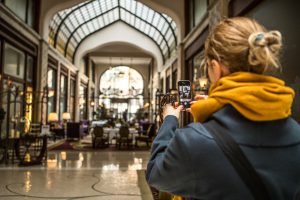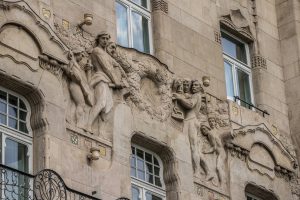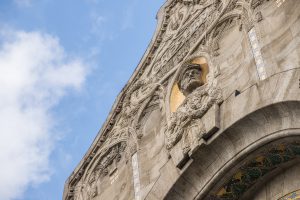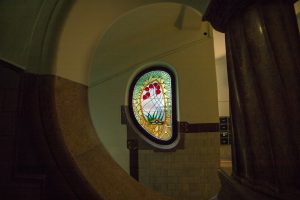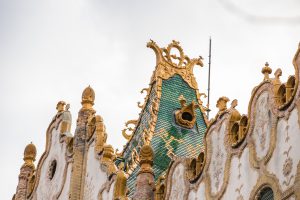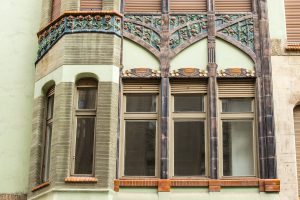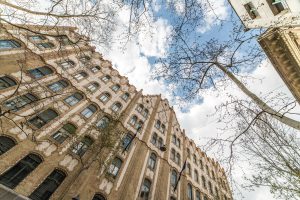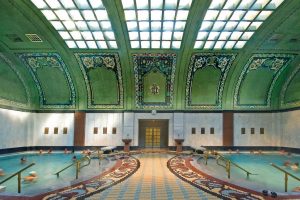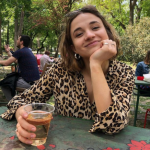Behind every new art style, trend, or movement, there’s a main driving force – but what spurred the development of Art Nouveau? Discover the history of Art Nouveau and visit some of the style’s most iconic buildings in Budapest with the newest guided tour of Beyond Budapest! The first walk will be held on 11 May: amongst many other things, you will find out what a mustache mug is, what young Karinthy thought about the new style, and what Art Nouveau has to do with a 12th century Iranian rug.
The fin de siècle lifestyle
The well-known expression literaly means the „end of the century”, but it represents so much more: it encapsulates a really specific attitude to life, characterized by fatigue and neurotic world-weariness. In two respects, however, it goes beyond the decadent feeling of 19th century Paris: it adores and worships art and beauty, while despising conventional and hypocritical bourgeois hedonism. A new demand for change evolves, and this rebellious spirit finds its expression in countless new artistic forms.
It is therefore understandable that the new artistic movement goes against the fossilized standards of the historicizing art styles, bringing bold colours, playful shapes, and dynamism into the forefront. Art Nouveau brought a number of innovations to architecture: for example, it pioneered the use of stained glass windows (until then only used in churches) as ornamental elements in apartment buildings and family homes, depicting secular themes. By the end of the 19th century, all the rich people in Hungary decorated their homes with stained glass windows.
Gresham Palace
The first stop of Beyond Budapest’s Art Nouveau walk is the iconic Gresham Palace which functioned as the centre for the social and business life of turn-of-the-century Pest. Built as the headquarters for the Gresham Insurance company, the palace also gave place to a number of other enterprises, as well as housed wealthy businessmen, aristocrats, artists, politicians, government officials, and land owners. During the walk you will hear about the building’s history, find out about its role in WWII, and learn how it became one of Budapest’s most luxurious 5-star hotel.
Royal Postal Savings Bank
In 1899 a tender was announced for the construction of the main building of the Royal Postal Savings Bank: in the end, the design contest was won by Ödön Lechner. We can safely say that this grand building is the summary of his unique style, and one of his most outstanding works. His kind of Art Nouveau is hallmarked by the accentuated use of floral and animal ornaments, either in a very detailed or stylized manner. Standing in front of the former headquarters of the Postal Savings Bank (now operating as the Hungarian State Treasury), you will learn the amount of different animal motifs found on the building’s rooftop, the origin of the bullhead motif, and the reason why Lechner wasn’t awarded any more state commissions after the completion of the Royal Postal Savings Bank.
Bedő House, The House of Hungarian Art Nouveau
Designed by Emil Vidor, Bedő House (also known as the House of Hungarian Art Nouveau) is the last stop of Beyond Budapest’s tour. Here you will come face to face with one of Art Nouveau’s most emblematic motifs, the peacock, a symbol of eternity. In the modern age it was first used by the English polyhistor William Morris, one of the founders of the Art Nouveau movement, who borrowed the design from a 12th century Iranian rug.
Today, the House of Hungarian Art Nouveau gives home to a varied and comprehensive exhibition on three floors, displaying beautiful ceramics, posters, furniture, jewelry, and peculiar household objects, such as the above mentioned mustache mug. Want to know what does „Gesamkunstwerk” mean, what are the unique features of the building, and why Hungarian Olympic athlete and architect Alfréd Hajós wasn’t exactly delighted by the apartment building? Register for the walk at here.
The Art Nouveau walk of Beyond Budapest also includes Aulich utca’s Walkó House, and the headquarters of the Hungarian Foreign Trade Bank.
Beyond Budapest Sightseeing has been organizing socio-cultural guided tours for more than 10 years. In the beginning, the walks were confined to District VIII, but the team has been exploring other parts of Budapest for a while now, mainly focusing on the treasures and secrets of the inner city and Óbuda neighbourhoods. Penetrating deep into the city and showing its true face, alongside its inhabitants, have become their specialty.
